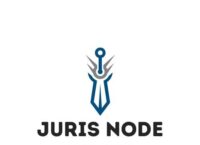In the modern world, businesses must conduct a certain level of due diligence before transacting with their clients. This is to prevent money laundering, terrorist financing, and other forms of illicit financial activities. Reporting entities, such as banks, financial institutions, intermediaries, etc. are responsible for ensuring that they verify the identity of their clients and maintain records of their transactions. In this post, we will provide a step-by-step guide on how to verify the identity of clients for transactions.
Step 1: Identify the Beneficial Owner
The first step in verifying the identity of a client is to identify the beneficial owner. The beneficial owner is an individual who ultimately owns or controls a client of a reporting entity or the person on whose behalf a transaction is being conducted. It includes a person who exercises ultimate effective control over a juridical person. Once the beneficial owner is identified, the reporting entity must maintain a record of documents evidencing the identity of the beneficial owner as well as account files and business correspondence relating to the client.
Step 2: Obtain Client Information
The next step is to obtain client information. The reporting entity must gather all relevant information about the client, including their name, address, date of birth, occupation, and contact information. The reporting entity must also obtain information on the purpose and intended nature of the business relationship.
Step 3: Verify Client Identity
After obtaining client information, the reporting entity must verify the identity of the client. This involves examining the ownership and financial position of the client, including the sources of their funds. The reporting entity must take additional steps to record the purpose behind conducting the specified transaction and the intended nature of the relationship between the transaction parties. If the client does not meet the conditions, the reporting entity must not proceed with the transaction.
Step 4: Categorize the Customer
Once the client’s identity is verified, the reporting entity must categorize the customer according to their perceived risk levels. This categorization will further decide the level of due diligence that each body must conduct. The categories may include high-risk, medium-risk, and low-risk customers. The reporting entity must put documentation requirements for clients trying to open or operate an account or conduct a transaction.
Step 5: Monitor the Client
The reporting entity must monitor the client’s transactions to ensure that they are consistent with the purpose and intended nature of the business relationship. If any specified transaction or series of transactions undertaken by a client is considered suspicious or likely to involve proceeds of crime, the reporting entity shall increase the future monitoring of the business relationship with the client, including greater scrutiny.
Step 6: Maintain Records
Finally, the reporting entity must maintain records of all transactions carried out by the client. This includes maintaining a record of documents evidencing the identity of the client and beneficial owners, as well as account files and business correspondence relating to the client. The records must be maintained for a period of five years from the date of the transaction between a client and the reporting entity.
Conclusion
In conclusion, verifying the identity of clients for transactions is a crucial step in preventing money laundering, terrorist financing, and other forms of illicit financial activities. Reporting entities must identify the beneficial owner, obtain client information, verify the client’s identity, categorize the customer, monitor the client, and maintain records of all transactions carried out by the client. By following this step-by-step guide, reporting entities can fulfill their obligations under the law and protect themselves from legal and reputational risks.

By:
Vijay Pal Dalmia, Advocate
Supreme Court of India & Delhi High Court
Email id: vpdalmia@gmail.com
Mobile No.: +91 9810081079




